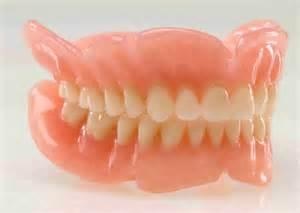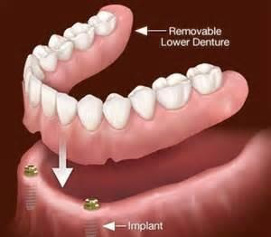Restorative Care
Fillings and Composite Resins
Fillings (restorations) are done to remove decay, and replace the lost tooth structure. It is called a filling because new material fills the hole left by the decay. The most commonly used materials for fillings are tooth colored composite resins and amalgams or silver fillings. Composite resins have several advantages over amalgams. The most notable advantage of dental composites is that they are available in a variety of shades to closely match the color of the existing teeth. Composites are bonded to tooth structure by both mechanical and chemical bonding. The chemical bonding strengthens the tooth’s structure and restores it to its original physical integrity. Very high bond strengths to the both enamel and dentin can be achieved. Composite resin can be used for both front (anterior) and back (posterior) teeth. Composite resins are more technique sensitive, require more time, and are more expensive. Some insurance companies do not cover composites for back teeth.
Dental Amalgams
Dental amalgams are alloys of mercury combined with silver, copper, tin, zinc and other trace metal. The main disadvantage of dental amalgam is that it is not aesthetic. Amalgams have/continue to receive negative publicity because of their presumed toxicity. Elemental mercury is found in liquid form, easily vaporizes at room temperature and is well absorbed by inhalation. After inhalation, only a small amount of elemental mercury continues to persist in the body and accounts for the central nervous system toxicity. In dentistry today, the amalgam is sealed in capsules, decreasing the amount of possible exposure to elemental mercury. The capsule is mixed (triturated) in an amalgamator to form the alloy used. Once mixed, the reaction forms an alloy, which is a combination of silver mercury and tin mercury. The mercury is chemically bound and does not have any of the toxic properties of the elemental mercury. Mercury toxicity from eating fish has also received a great deal of attention. Coal-burning power plants are the largest human-caused source of mercury emissions in the air in the United States, accounting for over 50 percent of all domestic mercury emissions. Mercury in the air eventually settles into water or onto land where it can be washed into water. Once deposited, certain microorganisms can change it into methylmercury, a highly toxic form that builds up in fish, shellfish and animals that eat fish. Fish and shellfish are the main sources of methylmercury exposure to humans.
Root Canals
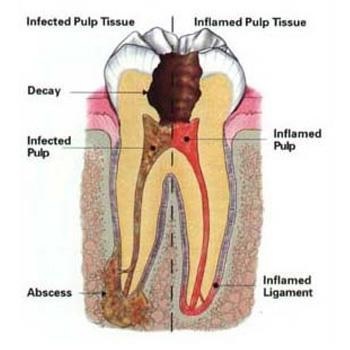
Root canal treatment (canal therapy or endodontic treatment) is necessary when a cavity is allowed to reach all the way to the pulp. Root canal involves the removal of all soft tissue from the canals in the root by use of special titanium or stainless steel files. Once cleaned and shaped the canals are disinfected and filled with an inert material. Usually a core build-up and crown is recommended for restoring a tooth that has had a root canal therapy. Regular cleanings and checkups prevent and detect problems early. Sometimes deep restorations or trauma to a tooth may cause the nerve to be damaged to the point it needs root canal therapy. Once this occurs the pulp becomes infected, and can even extend through the root tip and begin to eat away at the surrounding bone (abscess). Once the pulp is dead (necrotic) it cannot heal on its own and needs to be treated whether pain is present or absent. Chronic, but painless inflammation may affect the immune system, placing the overall health of the patient at risk. Symptoms that the pulp has become inflamed/infected may include sensitivity to hot/cold or sweets, pain, swelling, pain to biting or pressure, and a bad taste in the mouth. Sometimes, no symptoms are apparent and the person is unaware of any problem until a checkup.
Crowns Bridges and Implants
Crowns are full coverage restorations that are used to cover a tooth that is likely to break, or is too broken down to be restored with a filling. They are commonly done after root canal treatment. The larger the hole made by a cavity that has to be treated, the more likely the tooth will break, thus the need for a crown. During chewing, grinding of teeth, and clenching, teeth are subjected to tremendous pressures. Crowns are placed over the weakened tooth, providing strength and protecting the tooth against breakage. A broken or cracked tooth is a far more serious matter and much more difficult to treat. It takes two appointments to restore a tooth with a crown. During the first appointment, any decay is removed from the tooth and it is shaped to accept the crown. Then an impression is made of the tooth for use in fabricating a crown. Crowns are usually made of high-strength porcelain over gold alloy, over a non precious metal or all ceramic material. In the interim, a temporary crown is worn. In the second visit, the temporary is removed and the permanent crown is adjusted as needed and then cemented in place.
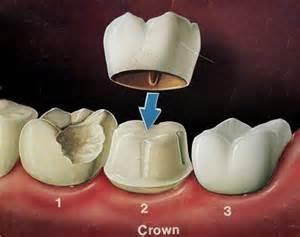
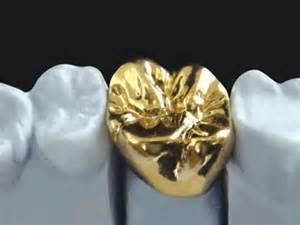
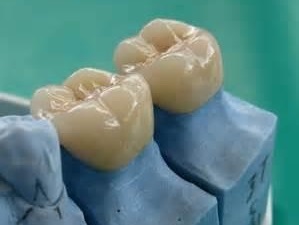
Replacement of Missing Teeth
Replacement of missing teeth may be achieved by one the following procedures:
- Implants
- Dental Bridges
- Removable partial or complete dentures
Implants
One option for replacing missing teeth involves implants. Dental implants are made of titanium, are bio compatible and integrate well with bone. There are three separate components that are required for restoring a tooth with implants. (1). The implant body, which is placed in sound bone structure and allowed to integrate with bone for a period of 3-5 months. It extends up to roughly the level of the bone. (2). The implant abutment, which extends from the bone level, is screwed into the implant and provides the supporting structure for the crown. (3). The crown, which is created by a prosthodontist and is connected to the implant or denture, is made from titanium, gold, or ceramic to give your implant a more natural appearance.
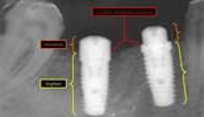
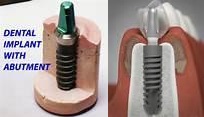
Dental Bridges
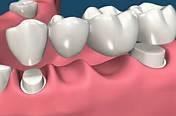
Dental bridges represent one of the options for filling the space created by a missing tooth. It is formed to look like the missing tooth, and it takes its place in the mouth. The bridge is supported by using the teeth adjacent to the missing tooth/teeth for support, hence the name. A bridge replaces the missing tooth, both functionally and cosmetically. Bridge work is as much an art as it is an exact science. The materials used may be gold alloys, porcelain bonded to metal alloy, or all ceramic material. The choice of material depends on requirements for strength, wear, and/or esthetics.
It is important that a missing tooth be replaced as soon as possible for several reasons. If not treated, the teeth surrounding the gap begin to shift decreasing the amount of space. In general, the tip of the roots remain in the same position while the visible part of the tooth (crown) changes the angle, shifts in the gap area and decreases the amount of space between the teeth. This movement affects the chewing efficiency. In addition, the teeth in the opposite arch may move into the space as well, making the tooth a candidate for extraction. This can result in problems with the entire jaw, e.g. TMJ. The inclined teeth are more difficult to clean making gum disease a distinct possibility and a serious problem. The degree of difficulty of treating the problem increases as the neglect continues.
Partial and Complete Dentures
Removable Partial Dentures
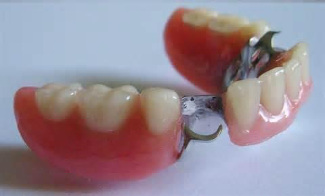
Replacement of multiple missing teeth may be achieved using a removable partial denture. While there are a number of options in terms of materials available for use in partial denture, we believe that only cast metal framework with resin denture base provides the strength, support, stability and minimal irritation to the soft tissue (gums).
Complete Dentures
Replacement of multiple missing teeth may be achieved using a removable partial denture. While there are a number of options in terms of materials available for use in partial denture, we believe that only cast metal framework with resin denture base provides the strength, support, stability and minimal irritation to the soft tissue (gums).
